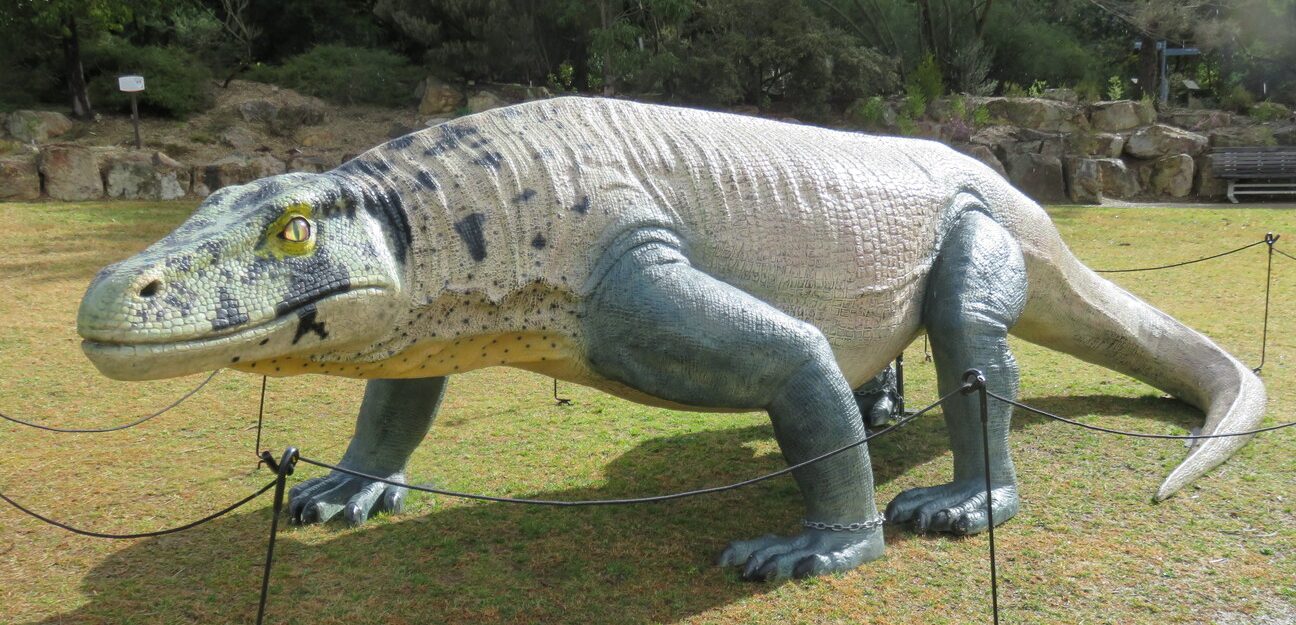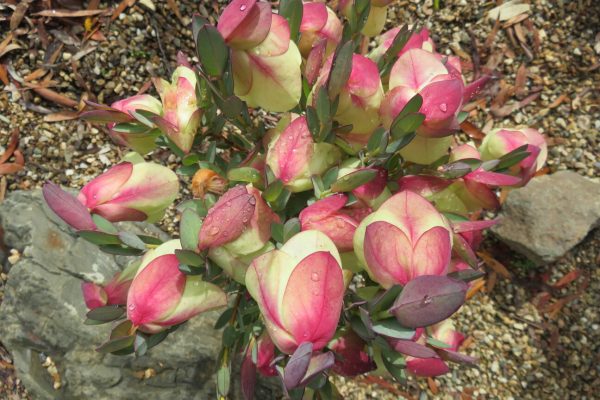
“Pick a sunny day, starting with a coffee in the Pollen café, and be surprised at the variety of plants in flower in winter,” says gardening writer CEDRIC BRYANT.

HAS it been some time since a visit to the Australian National Botanic Gardens?
Perhaps winter is not ideal, with the bitterly cold winds and drizzling rain we’ve had lately. However, pick a sunny day, starting with a coffee in the Pollen café, and be surprised at the variety of plants in bloom over winter.
One of my favourites, with its big, blousy flowers, is a member of the Malva family. Malva alyogyne huegelii, often referred to as the Aussie hibiscus, has rich, purplish coloured flowers to brighten any Canberra winter garden. At the end of each flowering season, stems should be cut to ground level.

SOME prehistoric monsters have been added to wander the gardens. Children will love them. These fit in with all the prehistoric plants that have been growing for several thousands of years. Megalania, which roamed during the Pleistocene period, is a carnivore, eating snakes, other reptiles and birds. It lived in open forests and woodlands and was five to seven metres long, weighing 600-1000kg. This dinosaur is quite rare, with no complete skeletons having been found, although fossil deposits have been discovered in caves, streams and rivers. Offering further evidence of their existence, they have been seen in Aboriginal cave drawings. I am sure the Aboriginals on a dark night would not like to come across this monster when out looking for their supper.

KIDS will also love The Red Centre display, further demonstrating the wide range of native plants and wild animals. Growing nearby is a group of Pimelea physodes, also known as Qualup bell. These look best planted in a group, as they are in the gardens. Growing to 80cm high with flowers as bracts of cream streaked with red or purple, these suit any garden, whether native or exotic, and work well as an understory for camellias and/or rhododendrons.
WHEN starting out on a tour of the gardens, call first at the information centre, to collect a “What’s in Flower” leaflet.
At the bookshop, I recommend “Australian Plants for Canberra Region Gardens and Other Cool Climate Areas”, published by the Australian Native Plants Society, formerly the Society for Growing Australian Plants, Canberra Region. This means you are getting the best of advice. Better yet, join the society.
However, save the bookshop for the end of your walkabout. I suggest this so you don’t have to carry your new books all around the gardens.
Who can be trusted?
In a world of spin and confusion, there’s never been a more important time to support independent journalism in Canberra.
If you trust our work online and want to enforce the power of independent voices, I invite you to make a small contribution.
Every dollar of support is invested back into our journalism to help keep citynews.com.au strong and free.
Thank you,
Ian Meikle, editor




Leave a Reply